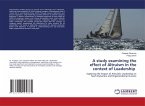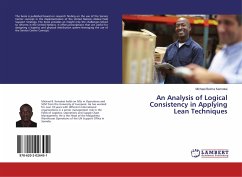In our research we are going to examine both GARCH and EGARCH seeing that they deal better with the dynamic nature of financial return series. For estimating, we have fitted the GARCH family of models such as GARCH (1,1) and EGARCH (1,1) to financial returns data using the pseudo maximum likelihood estimation and use a GEV approximation recommended by extreme value theory in order to model the tail of the distribution of innovations. Indeed, we are going to apply the conditional extreme value theory which is the combination of the classical EVT with GARCH (1,1) and EGARCH (1,1) in order to model the conditional distribution of the financial returns series relative to the Tunindex and forecast both common risk measures that are the Value at Risk and the Conditional Value at Risk. Moreover, some characteristics of the financial time series and some stylized facts of financial returns will be mentioned and studied.
Bitte wählen Sie Ihr Anliegen aus.
Rechnungen
Retourenschein anfordern
Bestellstatus
Storno








